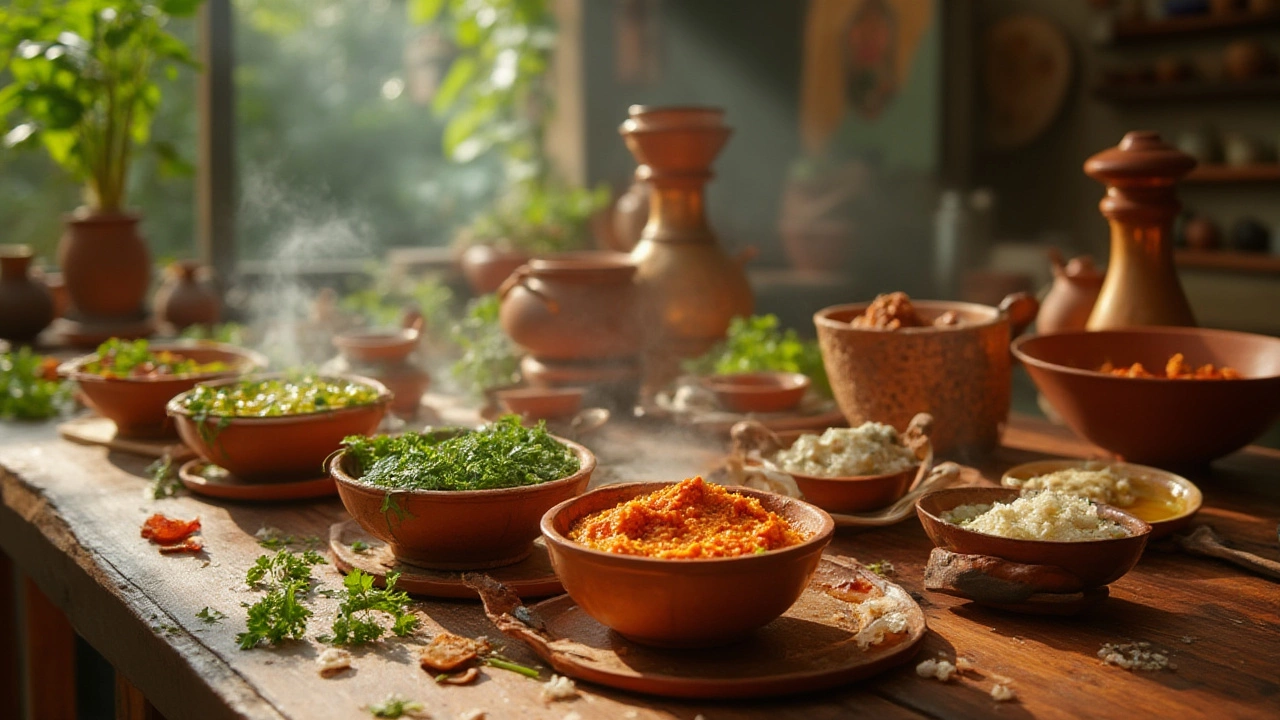Hot or Cold Indian Dishes – Temperature, Flavor & Serving Guides
When working with hot or cold, the temperature at which a dish is served, shaping taste, texture, and cultural context. Also known as temperature‑based dishes, it determines how spices release, how aromas develop, and how diners experience food.
In Indian cuisine, a diverse collection of regional recipes, temperature often works hand‑in‑hand with spice level, the perceived heat of chilies and peppercorns to create balance. A hot curry can mute a fierce chili punch, while a cold raita cools the palate after a spicy main. Serving style, the way a dish is presented and consumed also hinges on temperature: street‑side chai is served steaming, whereas mango pachadi arrives chilled. These three entities—temperature, spice, and serving style—form a triangle that shapes every bite.
Why Temperature Matters in Indian Cooking
The science behind hot or cold Indian dishes shows that heat changes the solubility of flavor compounds. When you simmer a lentil dal, the heat breaks down plant fibers, releasing bitter alkaloids that mellow with a squeeze of lemon. Serve that same dal cold, and the bitterness becomes more pronounced, so cooks often add yogurt or fresh herbs to rebalance. Conversely, a cold dessert like kulfi relies on low temperatures to crystallize milk solids, giving it that signature silkiness. Understanding the food temperature, the degree at which food is cooked or served lets you decide when to add finishing spices, when to rest a dish, and how long you can safely store it. For example, biryani is best enjoyed hot because the steam keeps the rice fluffy; sitting too long makes the grains stick and dulls the aromatic profile.
Practical tips flow from these principles. First, always pre‑heat your pan before adding oil—this prevents spices from burning and keeps the dish warm longer. Second, use a thermometer for delicate items like squeaky paneer kebabs; a target internal temperature of 160°F ensures the exterior stays crisp while the interior remains juicy. Third, plan cooling steps deliberately: after making a cucumber raita, chill it for at least 30 minutes to let the mint infuse fully. Finally, consider storage containers—glass jars keep hot soups hotter, while stainless steel keeps cold chutneys fresher. By mastering temperature control, you unlock the full range of flavors Indian food has to offer.
Below you’ll find a hand‑picked collection of recipes, science‑backed explanations, and troubleshooting tricks that dive deep into hot or cold dishes across India. From why lemon brightens a hot biryani to the shelf life of homemade chutney served chilled, each article gives you actionable insight to elevate your cooking. Explore the list and start experimenting with temperature to transform every meal.

Should Chutney Be Served Hot or Cold? Indian Cuisine Secrets Revealed
Should you eat chutney hot or cold? Find out how temperature changes flavor and texture, plus tips for getting the most from every spoonful.